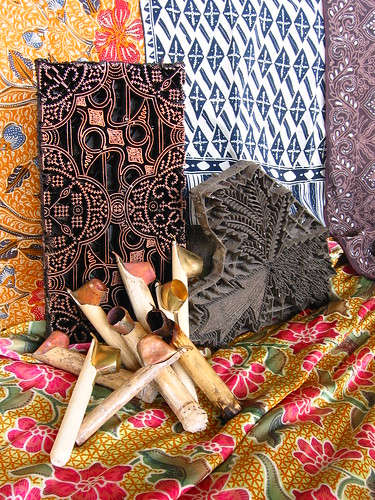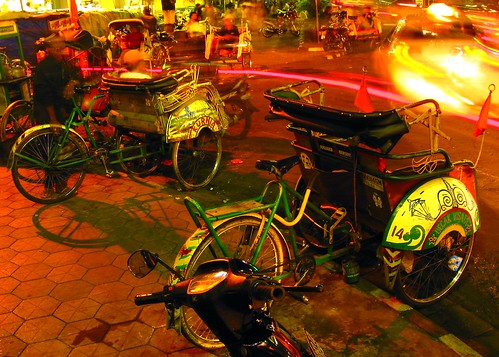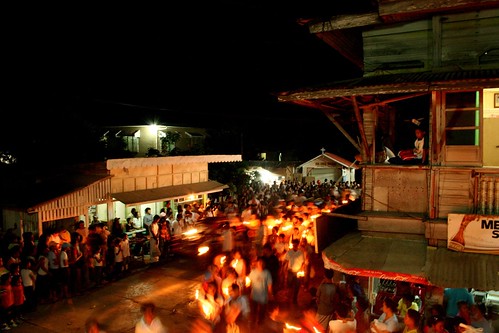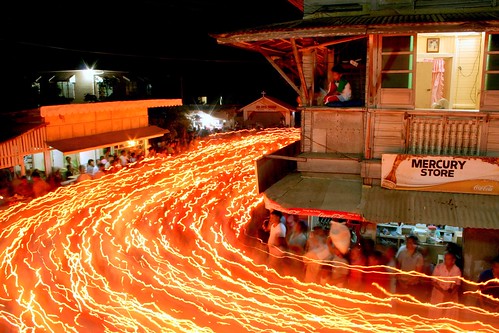the art of batik tulis
The ancient tradition of batik tulis could not be more alive in Indonesia- just visit any of the active workshops in Yogyakarta, the acknowledged center of the art, or its neighboring city Solo (Surakarta). Nothing much has changed really as the process remains as tedious as it was centuries ago.
Batik tulis, literally “written batik”, starts with drawing the design, often of ancient symbols and motifs, on fabric such as cotton or silk.
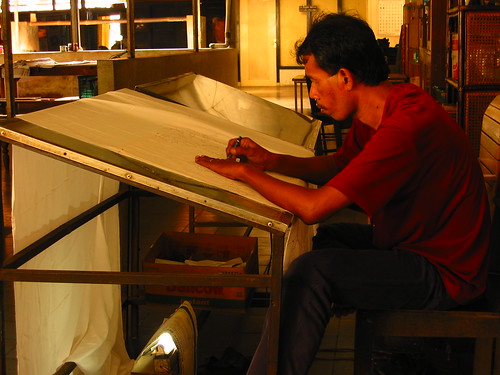
Melted wax, usually a mixture of beeswax and paraffin, is poured finely using the canting, a wood-handled copper funnel with a narrow tubing at the end.
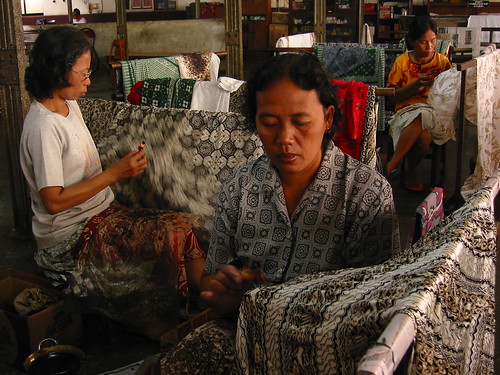
The cloth is dipped in a vat of dye which colors the portions not covered with wax and then the fabric is allowed to dry. Wax is subsequently removed by immersing the cloth in solvent, hot water or by ironing between absorbent paper.
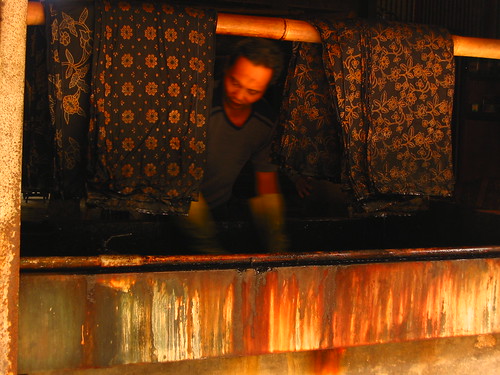
The process is repeated several times as only one color can be used at a single dip. The more colors there are in the print, the more likely that this is the same number of times that the cloth is waxed and dyed.
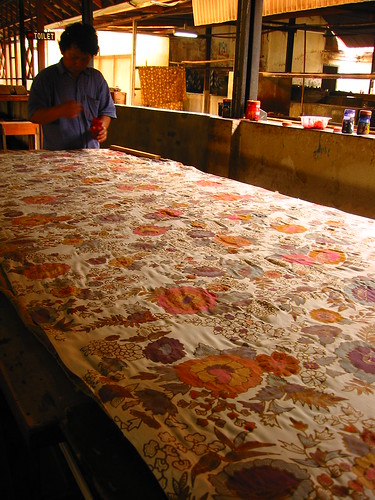
According to the factory manager, old women are mostly the expert artisans that can make the most elaborately original and deliriously wild batik. However, we did see several young apprentices. The survival of the art rests on the interests of the young to find sustainable work.
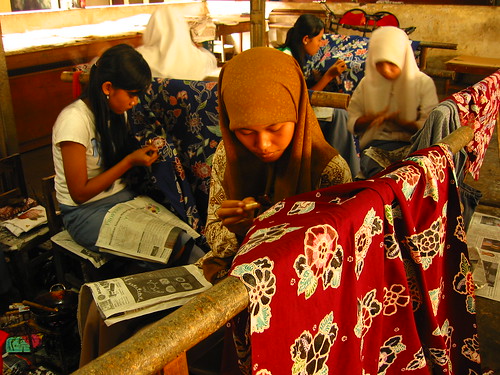
A typical 4-meter silk piece takes about three months to complete, which in 2005, goes for about $300. Obviously, the 17 meter bolt of silk being finished by the lady below, said to be destined for a kimono shop in Japan, should cost at least $1,200.
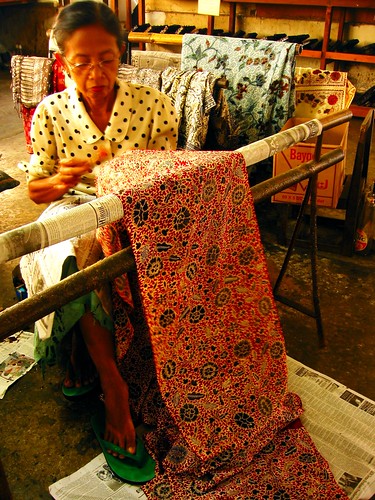
at Batik Plentong, Jl Tirtodipuran, Yogyakarta, Central Java, Indonesia
Canon PowerShot S40, 4/5s, f/3.5, 7.1mm
Designs can also be applied using a brush or carved blocks made of wood. Nowadays, most stamps, called cap (pronounced “chop”), are made of copper. Often though, the batik cap patterns are too uniform and perfect as compared to the traditional batik tulis which are more nuanced in its imperfections and blurs.
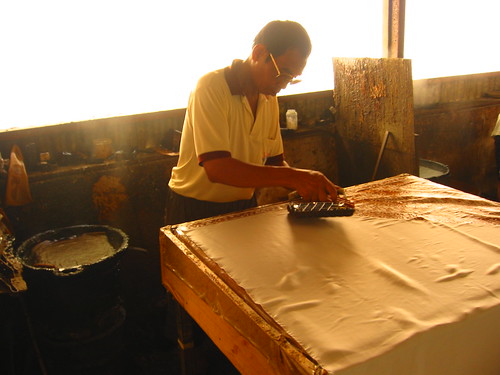
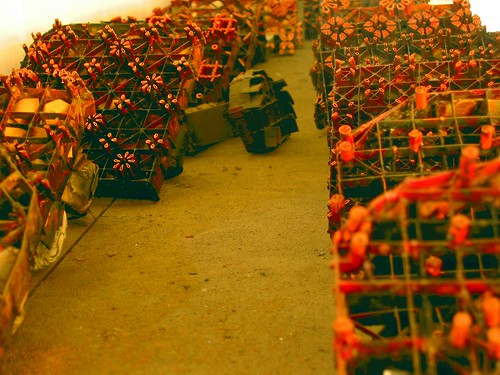
rows of copper cap stamps in the workshop
Canon PowerShot S40, 1.0s, f/4, 14.7mm, +1/3EV
Unsurprisingly, even batik tulis cotton handkerchiefs command as much as $7-10 in the malls. At the shop, I skipped them for they were too expensive. Instead, a friend helped me bargain to buy a 50-year old decommissioned cap stamp which now joins my canting collection at home. Over the years, I have collected my fair share of batik tulis. Guess what, I can never get enough of it.
